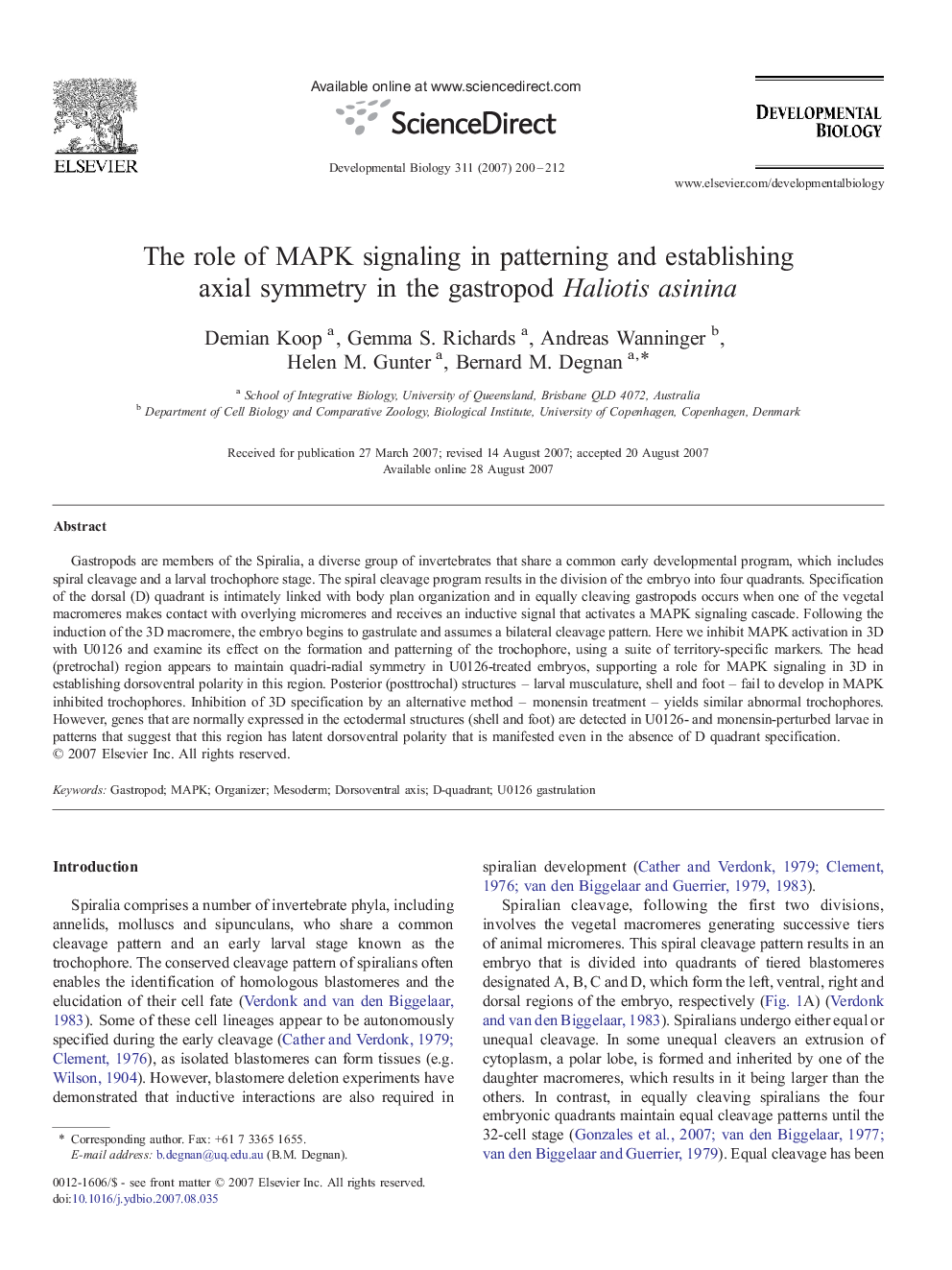| کد مقاله | کد نشریه | سال انتشار | مقاله انگلیسی | نسخه تمام متن |
|---|---|---|---|---|
| 2174858 | 1093818 | 2007 | 13 صفحه PDF | دانلود رایگان |

Gastropods are members of the Spiralia, a diverse group of invertebrates that share a common early developmental program, which includes spiral cleavage and a larval trochophore stage. The spiral cleavage program results in the division of the embryo into four quadrants. Specification of the dorsal (D) quadrant is intimately linked with body plan organization and in equally cleaving gastropods occurs when one of the vegetal macromeres makes contact with overlying micromeres and receives an inductive signal that activates a MAPK signaling cascade. Following the induction of the 3D macromere, the embryo begins to gastrulate and assumes a bilateral cleavage pattern. Here we inhibit MAPK activation in 3D with U0126 and examine its effect on the formation and patterning of the trochophore, using a suite of territory-specific markers. The head (pretrochal) region appears to maintain quadri-radial symmetry in U0126-treated embryos, supporting a role for MAPK signaling in 3D in establishing dorsoventral polarity in this region. Posterior (posttrochal) structures – larval musculature, shell and foot – fail to develop in MAPK inhibited trochophores. Inhibition of 3D specification by an alternative method – monensin treatment – yields similar abnormal trochophores. However, genes that are normally expressed in the ectodermal structures (shell and foot) are detected in U0126- and monensin-perturbed larvae in patterns that suggest that this region has latent dorsoventral polarity that is manifested even in the absence of D quadrant specification.
Journal: Developmental Biology - Volume 311, Issue 1, 1 November 2007, Pages 200–212